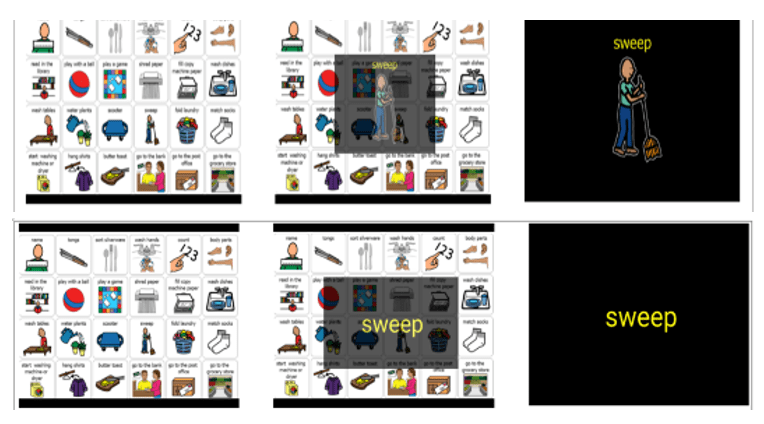Team Leaders: Janice Light, Krista Wilkinson
AAC Consumer Team: David Chapple, Musar
Challenge and Background Information
- Most technology displays, including AAC displays, are not research-based:
- they impose significant visual cognitive processing demands
- they create distractions
- they impede communication performance
- The use of eye tracking research technologies can help investigate visual attention to AAC displays in order to improve design
- For example, you can measure:
- Latency, frequency, duration, sequence of visual fixations
- For example, you can measure:
- RERC on AAC (2014-20) investigated effects of display characteristics on visual cognitive processing of individuals with complex needs (e.g., color, layout, navigation bar, etc.)
- The resulting research-based specification were disseminated to manufacturers & service providers
Goals

The new RERC on AAC will investigate the effects of targeted motion in AAC displays to increase visual attention & learning. Expected outcomes include
- Scientifically-based design specifications for using motion in AAC displays
- Maximize visual attention to key components
- Maximize learning of new symbols
- Picture symbols
- Written text
- Enhance communication performance
Updates
Additional Information
